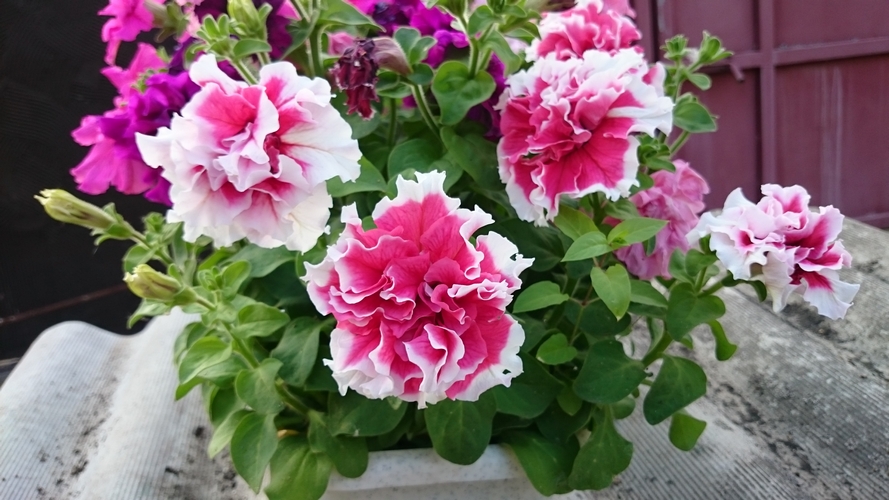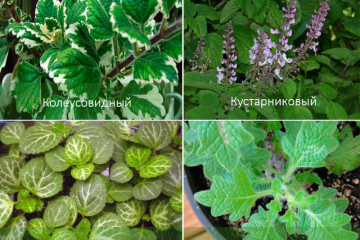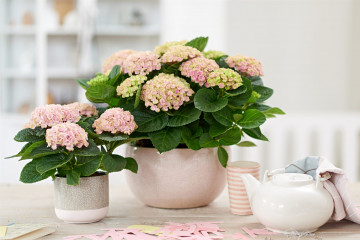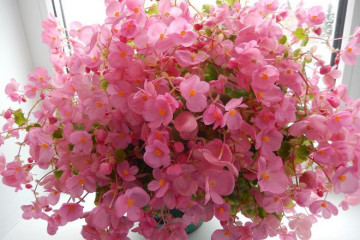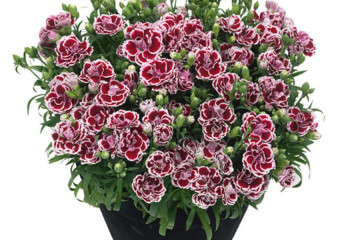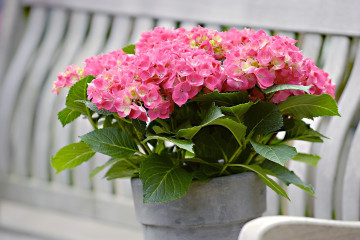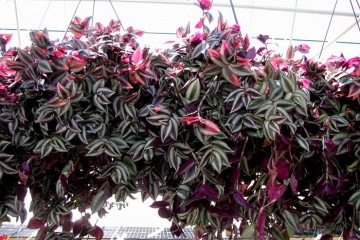Indoor petunia - care and cultivation at home
Content:
Petunia (petunia) is a fairly popular ornamental plant of the Solanaceae family, which is often grown to decorate the garden. The flower is unpretentious to care for, so it is popular among flower growers. However, despite the simplicity of cultivation, before planting petunias, it is necessary to familiarize yourself with the description of its features, as well as tips for caring for it.
Short description
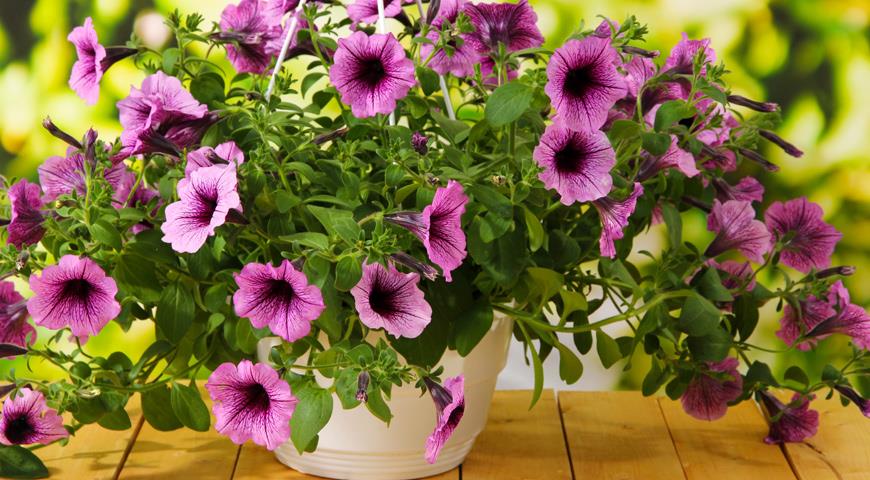
Blooming petunia petals are familiar to many
The flower was first discovered by botanists at the end of the 18th century. However, it was only in the middle of the next century that open culture began to be subjected to selection. In the same period of time, the first hybrid flower varieties were bred, which were later combined into one class. They were distinguished by poor resistance to frost and inability to abrupt changes in weather conditions. At the beginning of the 20th century, breeders managed to get more frost-resistant crops that can be grown not only in the house, but also outdoors.
Today, petunia is a medium-sized shrub that can have creeping or erect shoots. The height of the plant largely depends on the variety. However, most often the bushes grow up to 50-70 cm.Sometimes there are more compact bushes no more than 20 cm high.
Petunia's leaves are rather long - 50-100 mm in length. They are colored bright green. The surface of the leaf plates is covered with short villi. The plant blooms in the second half of spring and continues to bloom until autumn. At this time, small flowers are formed on the bushes, which can have different colors. Most often, flower petals are painted in the following colors:
- purple;
- blue;
- pink;
- scarlet.
Common varieties
Before growing petunia from seeds, you need to familiarize yourself with the most common varieties of this flower.
Among the varieties that are popular with flower growers, the following can be distinguished:
- Pirouette. One of the most famous flower varieties. The variety is resistant to frost and drought. Pirouette grows up to 40 cm in height. Blooms from May to October. The flowers are pinkish, sometimes with a burgundy tint.
- La Gioconda. This variety can be planted and grown both indoors and outdoors. It is resistant to frost and tolerates temperature extremes without any problems. Gioconda grows up to one meter and therefore needs a garter. Blooms in the second half of May with pinkish flowers.
- Sonata. Terry annual cultivar that grows up to 40 cm in height. The sonata blooms at the end of April and blooms until the first days of September. Its petals are white.
Petunia: care and cultivation at home
Every person who is going to grow petunia from seeds should know how to properly care for it.
Temperature
In order for such a flower to bloom profusely, it must be grown at the optimum temperature.Temperature indicators should be at the level of 18-22 degrees Celsius. In such conditions, it will bloom within 4-5 months.
Lighting
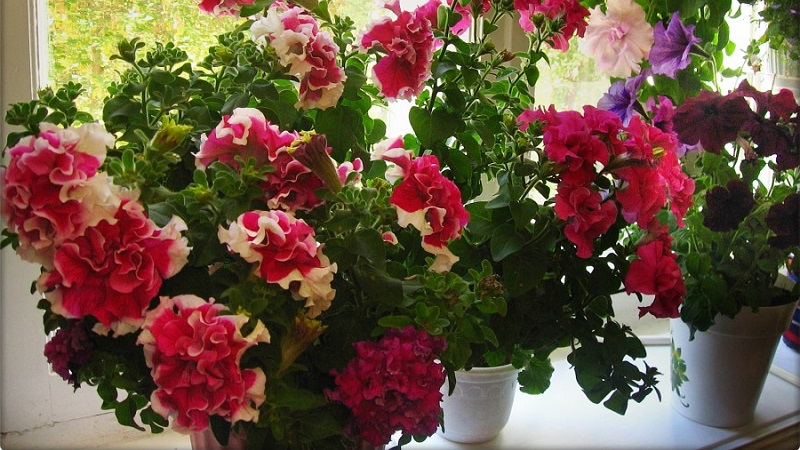
The windowsill is the best place to grow petunias in the apartment
During the cultivation of this terry flower, you need to monitor the lighting. Especially if it grows not on the street, but in an apartment. The duration of daylight hours for an adult plant should be at least 12 hours. Therefore, in winter, lighting devices will have to be installed near the planted bushes to obtain additional light.
Watering
Many novice florists are interested in how to properly water petunias. This must be done very carefully so that a lot of liquid does not fall on the surface of the sheet plates. In the summer, watering should be done daily so that the soil is not dry. The rest of the year, the flower is irrigated every 3-4 days.
Spraying
After planting, petunias need to be sprayed periodically, especially in summer. For this, water is used, heated to room temperature. It is evenly sprayed onto the stems with a special sprayer.
Humidity
To get abundant flowering, you need to monitor the moisture content of the soil and air. The plant needs moderate moisture and therefore does not like waterlogged or dry soil. Wet ground can cause rot and other dangerous diseases. Overdried soil also negatively affects the development of the flower.
Priming

Peat is an indispensable component of a soil mixture for flowers
It is necessary to plant seeds and grow seedlings in the most suitable soil for such a plant. For planting petunias, soil is suitable, which contains the following components:
- peat;
- sod land;
- river sand.
Top dressing
During the cultivation of petunia, it is necessary to periodically feed it with fertilizers. For the first time, you need to do this two weeks after planting the seeds. During this period, the soil is watered with a weak manganese solution. Then the flower must be fed with mineral nitrogen-containing fertilizers at least once a month.
Flowering features
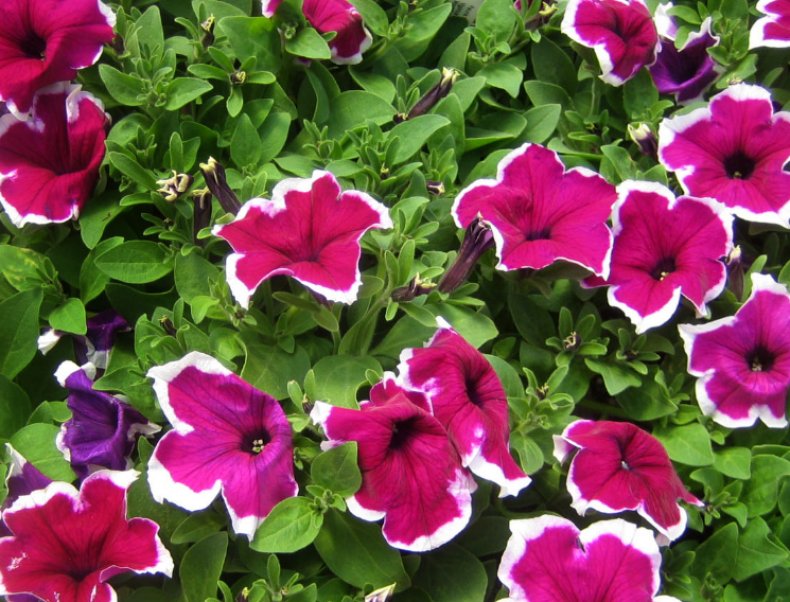
Blooming large-flowered petunia
Petunia blooms two and a half months after planting, in mid or late May. Some large-flowered varieties of the crop bloom two weeks later. Flowering lasts for 4-5 months. However, if the plant is grown in a greenhouse, it can bloom all year round.
The shape of the flowers can be different, it all depends on the variety. By form, they are divided into the following groups:
- simple;
- terry;
- large-flowered;
- small-flowered.
The types of flowers can also be different. However, the most common ones are those that are painted in scarlet, pink and blue.
During the flowering period, the plant requires special care. It is necessary to water it more often so that the soil does not have time to dry out. You will also have to actively add organic and mineral fertilizers.
Features of care during the rest period, in winter
People who are going to seriously engage in petunia breeding should understand the nuances of caring for her during the dormant period. You need to take care of flower bushes in winter, observing the following conditions:
- Reduced watering. In winter, watering should be done infrequently - 3-4 times a month.
- Lack of dressing. In winter, petunia does not need fertilization and therefore does not need to be fed.
- Maintaining optimal temperature. In winter, the flower can be grown at a temperature of 8-10 degrees Celsius.
Home pruning
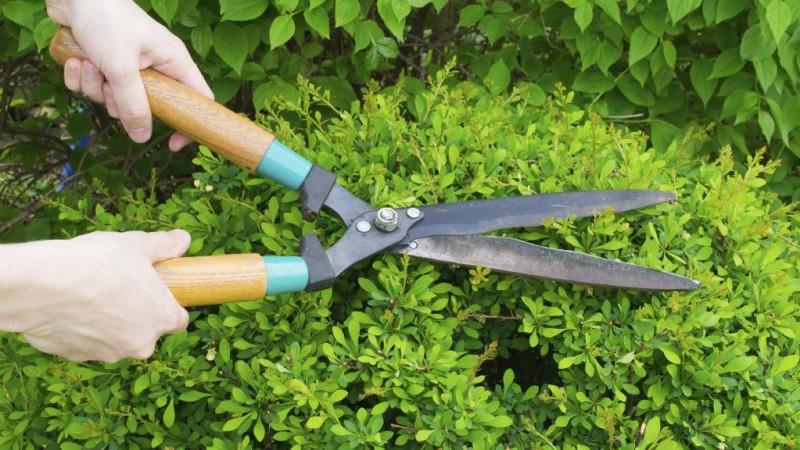
Garden shears are the best pruning tool
A few weeks before the beginning of flowering, the first pruning of the flower bush is carried out. This procedure is needed to maintain the splendor of the plant. The ends of the shoots are cut off first. Then, during the procedure, remove all dried leaves and shoots on which flower buds do not form.
Re-pruning is needed after the petunia has faded. From it you need to cut and collect all the dried buds. This is done so that new seeds do not have time to ripen in them.
Reproduction methods
There are two main ways in which you can propagate homemade petunias.
Petunia: growing from seeds at home
Before sowing seeds, you need to collect them. Seed should be collected in early autumn, when the plant stops blooming and ripe bolls appear on it.
The collected seeds should be planted in the second half of March, when it gets warmer and daylight hours increase. Before growing petunia from seeds at home, the seed must be germinated. To do this, the seeds must be treated with a growth stimulant and soaked in a container with water for 2-3 days.
The prepared seeds are planted in a peat pot filled with soil. After planting, the pot with the planted flowers is transferred to a well-lit windowsill.
Propagation by cuttings

Sprouted cuttings of petunia
Some growers do not want to deal with seed preparation and instead resort to propagating petunias by cuttings at home. Cutting allows petunias to grow much faster.
Step-by-step instructions for rooting and planting cuttings are as follows:
- Pruning young shoots. You need to cut them in early spring, before the culture begins to bloom.
- Rooting. To root cut cuttings, they must be placed in a pot of loose soil. They dig into the ground no deeper than 3-4 cm.
- Watering. Planted cuttings should be watered every two days.
- Transfer. Rooted and germinated cuttings are transplanted after 2-3 weeks.
Transplanting indoor petunias, picking
You need to dive indoor petunia as follows:
- Prepare a pot for transplant. It is filled with soil mixture in advance, after which the soil is moistened.
- Dig up the sprouts. The plant is carefully removed from the old pot along with the soil.
- Transfer to a new container. Before that, you need to dig a spacious hole so that the root system of the flower can fully fit into it.
- The planted petunia is sprinkled with soil and watered with warm water.
Possible growing problems
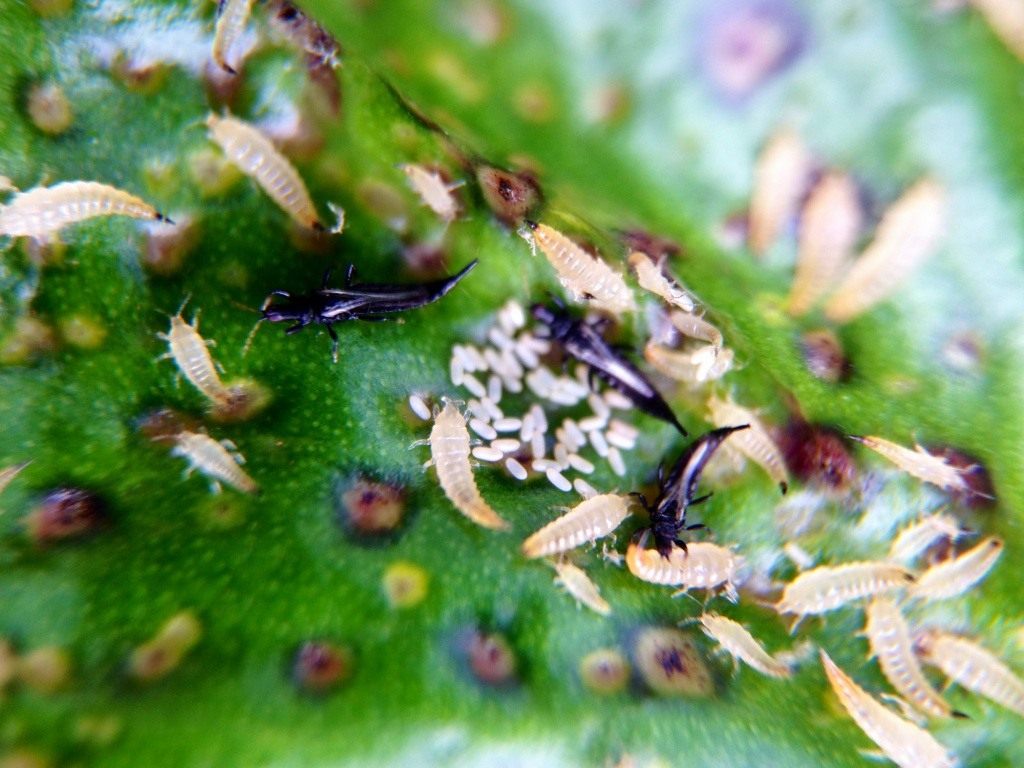
Thrips are one of the most dangerous petunia pests
Petunia, like many other plants, can get sick and be attacked by pests. The following signs indicate the development of diseases:
- Dark and oily spots on foliage. Most often they appear in plants with wet rot.
- Drying of the edges of the leaves. This is a sign of anthracnose and rust.
- Gray bloom and wilting of shoots. Such symptoms occur with the development of powdery mildew.
Another common problem is pests. The most common attacks on petunias are thrips, spider mites, aphids, scale insects and mealy worms.
Petunia is a beautiful plant that you can use to decorate your garden and apartment. Before planting such a flower, you need to figure out whether it is possible to grow petunia as a houseplant, how to propagate it and how to properly care for it.
